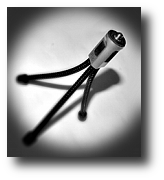When Reed Art & Imaging decided to publish an electronic newsletter. I went on an expedition to investigate what was the best software to use and how to comply with the anti-spam laws. Initially I tried two programs; Constant Contact and Autoresponder. Constant Contact has templates that were fairly easy to edit and use. I initiated a trial with Constant Contact for 60 days. During that time, I worked with their templates and basically had a test drive. I found Constant Contact, fairly easy to use. Autoresponder allowed me to cut and paste the code in from Adobe Dreamweaver. I used Adobe’s Dreamweaver to design and create the HTML e-letter. We used Autoresponder to send out the e-letter. We currently use A Better Email which has some great features. All of these programs helped you to comply with the CAN_SPAM act. These federal laws, must be followed or you can be heavily fined. Here’s the website address to download a pdf file of these requirements from the Federal Trade Commission.:
http://business.ftc.gov/documents/bus61-can-spam-act-Compliance-Guide-for-Business
Below is a rundown of CAN-SPAM’s main requirements:
Don’t use false or misleading header information.
Your “From,” “To,” “Reply-To,” and routing information – including the originating domain name and email address – must be accurate and identify the person or business who initiated the message.
1) Don’t use deceptive subject lines.
The subject line must accurately reflect the content of the message.
Identify the message as an ad. The law gives you a lot of leeway in how to do this, but you must disclose clearly and conspicuously that your message is an advertisement.
Tell recipients where you’re located. Your message must include your valid physical postal address. This can be your current street address, a post office box you’ve registered with the U.S. Postal Service, or a private mailbox you’ve registered with a commercial mail receiving agency established under Postal Service regulations.
2) Tell recipients how to opt out of receiving future email from you.
Your message must include a clear and conspicuous explanation of how the recipient can opt out of getting email from you in the future. Craft the notice in a way that’s easy for an ordinary person to recognize, read, and understand. Creative use of type size, color, and location can improve clarity. Give a return email address or another easy Internet-based way to allow people to communicate their choice to you. You may create a menu to allow a recipient to opt out of certain types of messages, but you must include the option to stop all commercial messages from you. Make sure your spam filter doesn’t block these opt-out requests.
3) Honor opt-out requests promptly.
Any opt-out mechanism you offer must be able to process opt-out requests for at least 30 days after you send your message. You must honor a recipient’s opt-out request within 10 business days. You can’t charge a fee, require the recipient to give you any personally identifying information beyond an email address, or make the recipient take any step other than sending a reply email or visiting a single page on an Internet website as a condition for honoring an opt-out request. Once people have told you they don’t want to receive more messages from you, you can’t sell or transfer their email addresses, even in the form of a mailing list. The only exception is that you may transfer the addresses to a company you’ve hired to help you comply with the CAN-SPAM Act.
4) Monitor what others are doing on your behalf.
The law makes clear that even if you hire another company to handle your email marketing, you can’t contract away your legal responsibility to comply with the law. Both the company whose product is promoted in the message and the company that actually sends the message may be held legally responsible.
5) Do not ‘buy’ a list.
The best results always come from people who opt in and that know or know of you. Also, Constant Contact does not allow you to use purchased lists. We work within our own customer base or use an opt-in to receive the e-letter. We include an unsubscribe feature and honor any request we receive to opt-out from receiving the e-letter.
5) Make Your E-Letter Unique!
Our e-letter has monthly contests that I find. We hold frequent contests for our Facebook fans too! Every week the theme changes and around once a month we hold a contest and the winner is chosen by the amount of likes that their image receives. Whenever we find something that promotes a community group, we try and let our readers know about it. Additionally we promote through a short video, selected customers. Each video has an interview and a slide show of the customers work. One of our core beliefs, is that when our customers win, we win.


